ISYS628 Semester 2 Business Process Modelling: Birkbeck Case Study
VerifiedAdded on 2023/06/03
|21
|2730
|317
Report
AI Summary
This report provides a detailed analysis of the Birkbeck University of London case study, focusing on the challenges faced, objectives set, and improvements achieved through Business Process Modeling (BPM). It covers the university's efforts to achieve operational excellence, addressing issues like funding changes and declining student enrollment. The report discusses the use of Bizagi software for process discovery and highlights improvements such as faster student status amendments and reduced student debt. Furthermore, it includes BPMN diagrams illustrating various university processes, including new process development, student collaboration, order fulfillment, and incident management. The document also explores the application of Enterprise Architecture (EA) and its relationship with BPM, emphasizing the importance of aligning IT strategies with business needs. The report concludes with a discussion on quality management, assurance, and control in BPM, along with the rationale for process changes at Ford Motor Corp. This comprehensive analysis showcases the strategic importance of BPM in organizational improvement. Desklib offers a wealth of similar solved assignments and past papers for students.

BUSINESS PROCESS MODELLING
1
1
Paraphrase This Document
Need a fresh take? Get an instant paraphrase of this document with our AI Paraphraser
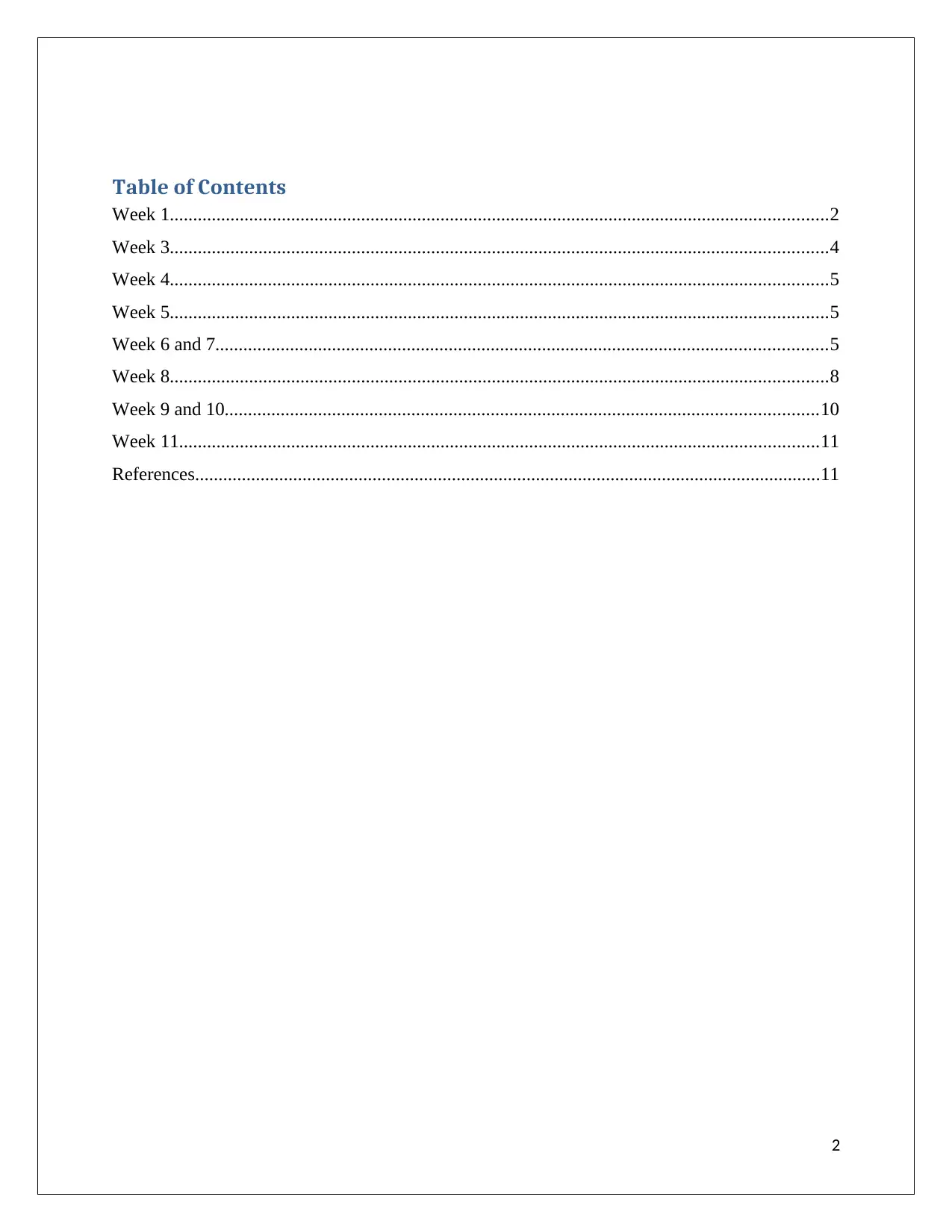
Table of Contents
Week 1.............................................................................................................................................2
Week 3.............................................................................................................................................4
Week 4.............................................................................................................................................5
Week 5.............................................................................................................................................5
Week 6 and 7...................................................................................................................................5
Week 8.............................................................................................................................................8
Week 9 and 10...............................................................................................................................10
Week 11.........................................................................................................................................11
References......................................................................................................................................11
2
Week 1.............................................................................................................................................2
Week 3.............................................................................................................................................4
Week 4.............................................................................................................................................5
Week 5.............................................................................................................................................5
Week 6 and 7...................................................................................................................................5
Week 8.............................................................................................................................................8
Week 9 and 10...............................................................................................................................10
Week 11.........................................................................................................................................11
References......................................................................................................................................11
2
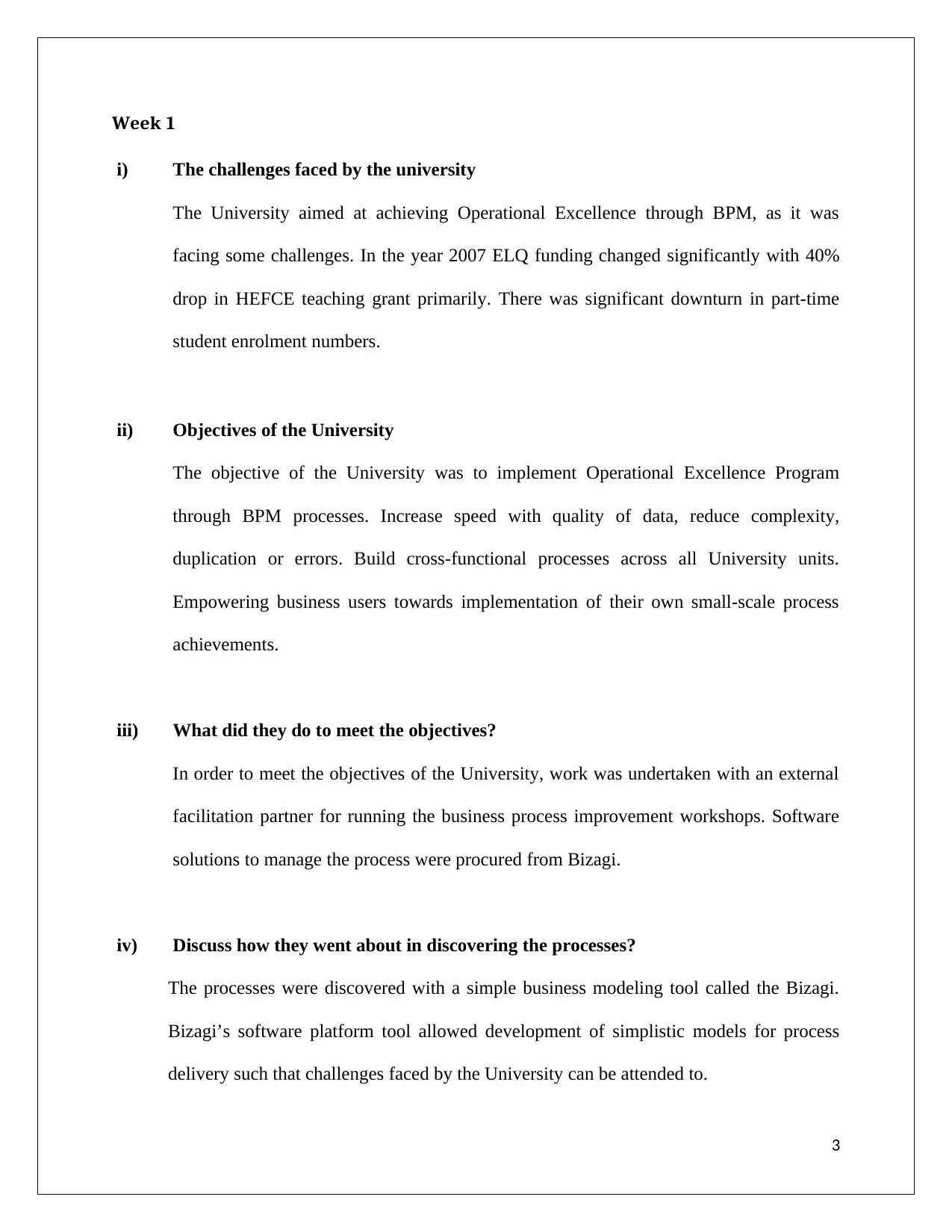
Week 1
i) The challenges faced by the university
The University aimed at achieving Operational Excellence through BPM, as it was
facing some challenges. In the year 2007 ELQ funding changed significantly with 40%
drop in HEFCE teaching grant primarily. There was significant downturn in part-time
student enrolment numbers.
ii) Objectives of the University
The objective of the University was to implement Operational Excellence Program
through BPM processes. Increase speed with quality of data, reduce complexity,
duplication or errors. Build cross-functional processes across all University units.
Empowering business users towards implementation of their own small-scale process
achievements.
iii) What did they do to meet the objectives?
In order to meet the objectives of the University, work was undertaken with an external
facilitation partner for running the business process improvement workshops. Software
solutions to manage the process were procured from Bizagi.
iv) Discuss how they went about in discovering the processes?
The processes were discovered with a simple business modeling tool called the Bizagi.
Bizagi’s software platform tool allowed development of simplistic models for process
delivery such that challenges faced by the University can be attended to.
3
i) The challenges faced by the university
The University aimed at achieving Operational Excellence through BPM, as it was
facing some challenges. In the year 2007 ELQ funding changed significantly with 40%
drop in HEFCE teaching grant primarily. There was significant downturn in part-time
student enrolment numbers.
ii) Objectives of the University
The objective of the University was to implement Operational Excellence Program
through BPM processes. Increase speed with quality of data, reduce complexity,
duplication or errors. Build cross-functional processes across all University units.
Empowering business users towards implementation of their own small-scale process
achievements.
iii) What did they do to meet the objectives?
In order to meet the objectives of the University, work was undertaken with an external
facilitation partner for running the business process improvement workshops. Software
solutions to manage the process were procured from Bizagi.
iv) Discuss how they went about in discovering the processes?
The processes were discovered with a simple business modeling tool called the Bizagi.
Bizagi’s software platform tool allowed development of simplistic models for process
delivery such that challenges faced by the University can be attended to.
3
⊘ This is a preview!⊘
Do you want full access?
Subscribe today to unlock all pages.

Trusted by 1+ million students worldwide
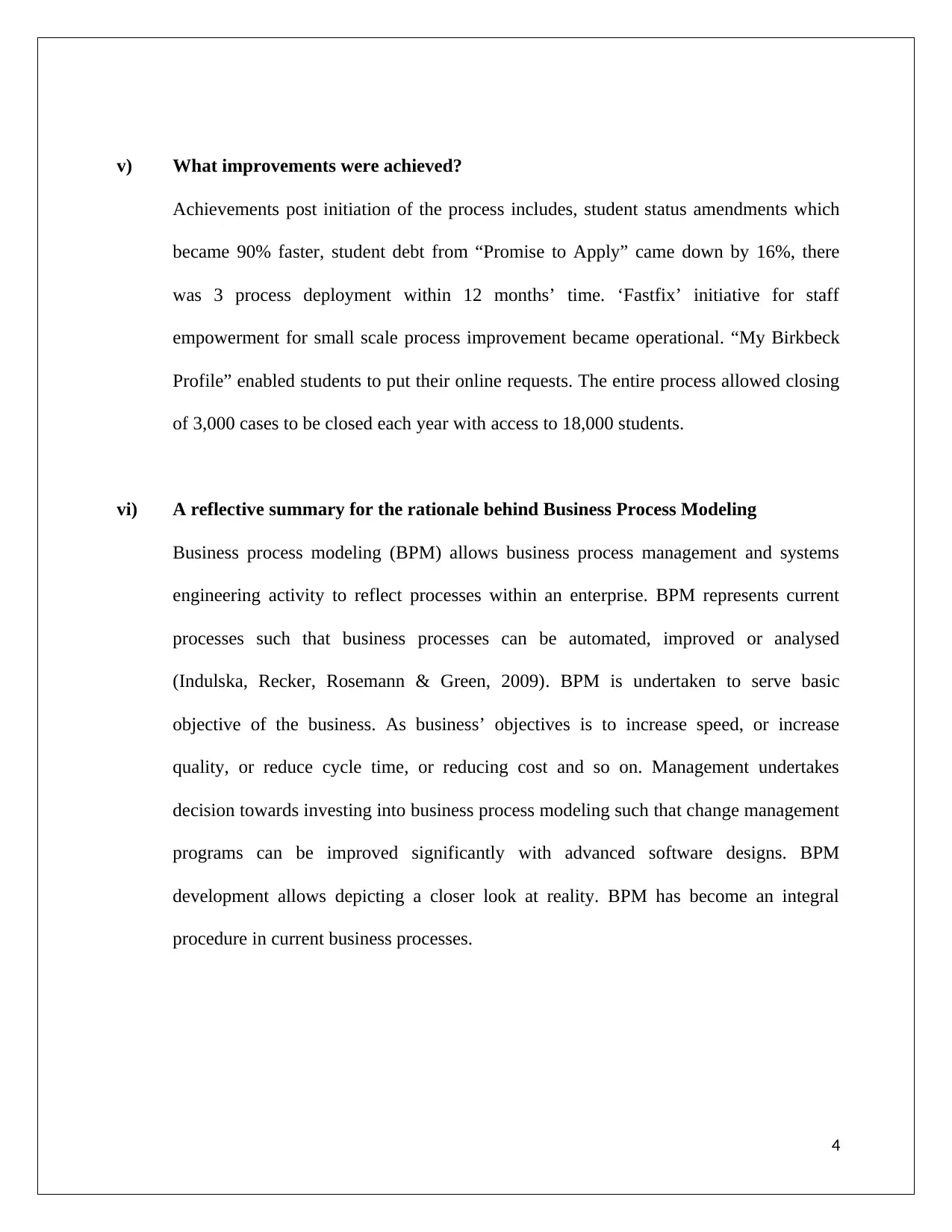
v) What improvements were achieved?
Achievements post initiation of the process includes, student status amendments which
became 90% faster, student debt from “Promise to Apply” came down by 16%, there
was 3 process deployment within 12 months’ time. ‘Fastfix’ initiative for staff
empowerment for small scale process improvement became operational. “My Birkbeck
Profile” enabled students to put their online requests. The entire process allowed closing
of 3,000 cases to be closed each year with access to 18,000 students.
vi) A reflective summary for the rationale behind Business Process Modeling
Business process modeling (BPM) allows business process management and systems
engineering activity to reflect processes within an enterprise. BPM represents current
processes such that business processes can be automated, improved or analysed
(Indulska, Recker, Rosemann & Green, 2009). BPM is undertaken to serve basic
objective of the business. As business’ objectives is to increase speed, or increase
quality, or reduce cycle time, or reducing cost and so on. Management undertakes
decision towards investing into business process modeling such that change management
programs can be improved significantly with advanced software designs. BPM
development allows depicting a closer look at reality. BPM has become an integral
procedure in current business processes.
4
Achievements post initiation of the process includes, student status amendments which
became 90% faster, student debt from “Promise to Apply” came down by 16%, there
was 3 process deployment within 12 months’ time. ‘Fastfix’ initiative for staff
empowerment for small scale process improvement became operational. “My Birkbeck
Profile” enabled students to put their online requests. The entire process allowed closing
of 3,000 cases to be closed each year with access to 18,000 students.
vi) A reflective summary for the rationale behind Business Process Modeling
Business process modeling (BPM) allows business process management and systems
engineering activity to reflect processes within an enterprise. BPM represents current
processes such that business processes can be automated, improved or analysed
(Indulska, Recker, Rosemann & Green, 2009). BPM is undertaken to serve basic
objective of the business. As business’ objectives is to increase speed, or increase
quality, or reduce cycle time, or reducing cost and so on. Management undertakes
decision towards investing into business process modeling such that change management
programs can be improved significantly with advanced software designs. BPM
development allows depicting a closer look at reality. BPM has become an integral
procedure in current business processes.
4
Paraphrase This Document
Need a fresh take? Get an instant paraphrase of this document with our AI Paraphraser
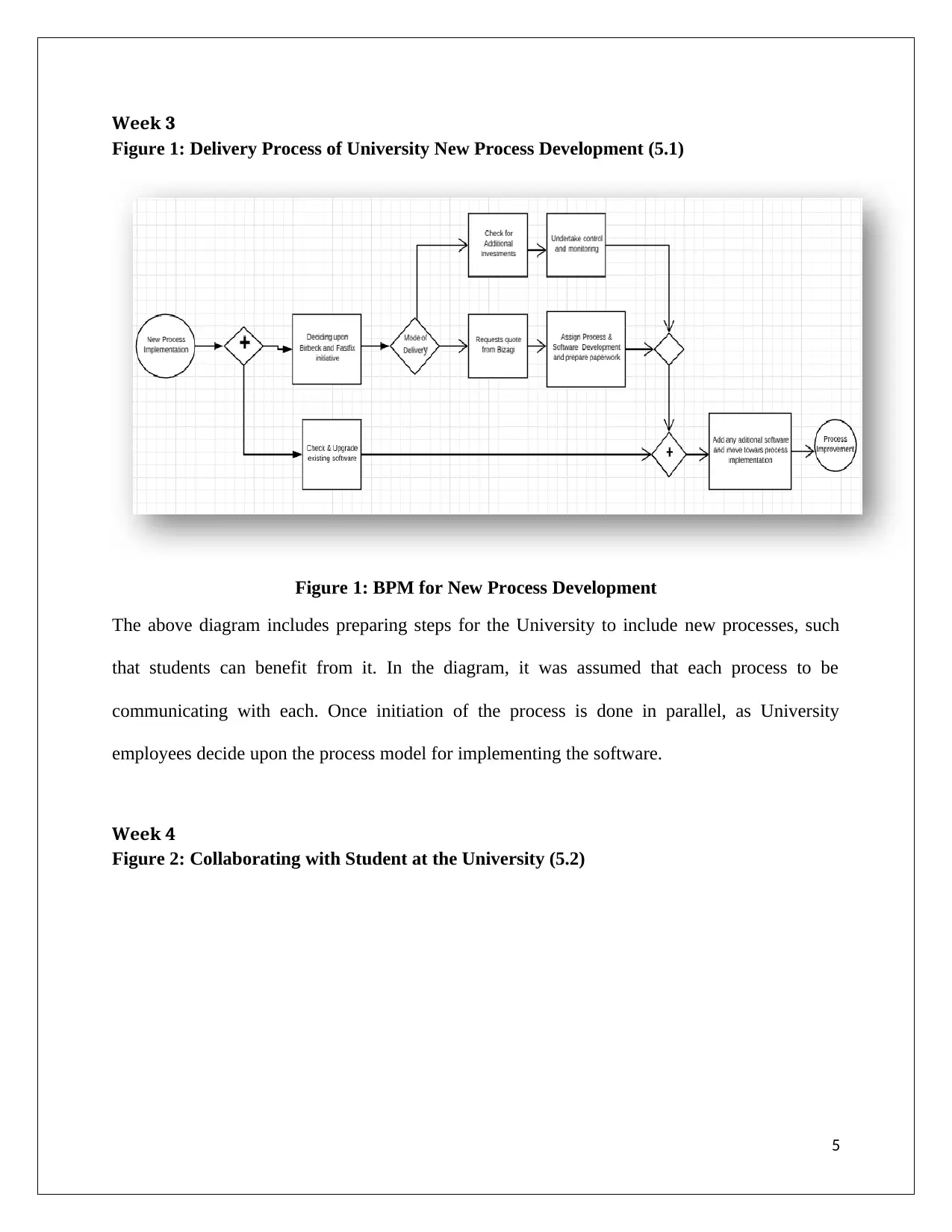
Week 3
Figure 1: Delivery Process of University New Process Development (5.1)
Figure 1: BPM for New Process Development
The above diagram includes preparing steps for the University to include new processes, such
that students can benefit from it. In the diagram, it was assumed that each process to be
communicating with each. Once initiation of the process is done in parallel, as University
employees decide upon the process model for implementing the software.
Week 4
Figure 2: Collaborating with Student at the University (5.2)
5
Figure 1: Delivery Process of University New Process Development (5.1)
Figure 1: BPM for New Process Development
The above diagram includes preparing steps for the University to include new processes, such
that students can benefit from it. In the diagram, it was assumed that each process to be
communicating with each. Once initiation of the process is done in parallel, as University
employees decide upon the process model for implementing the software.
Week 4
Figure 2: Collaborating with Student at the University (5.2)
5
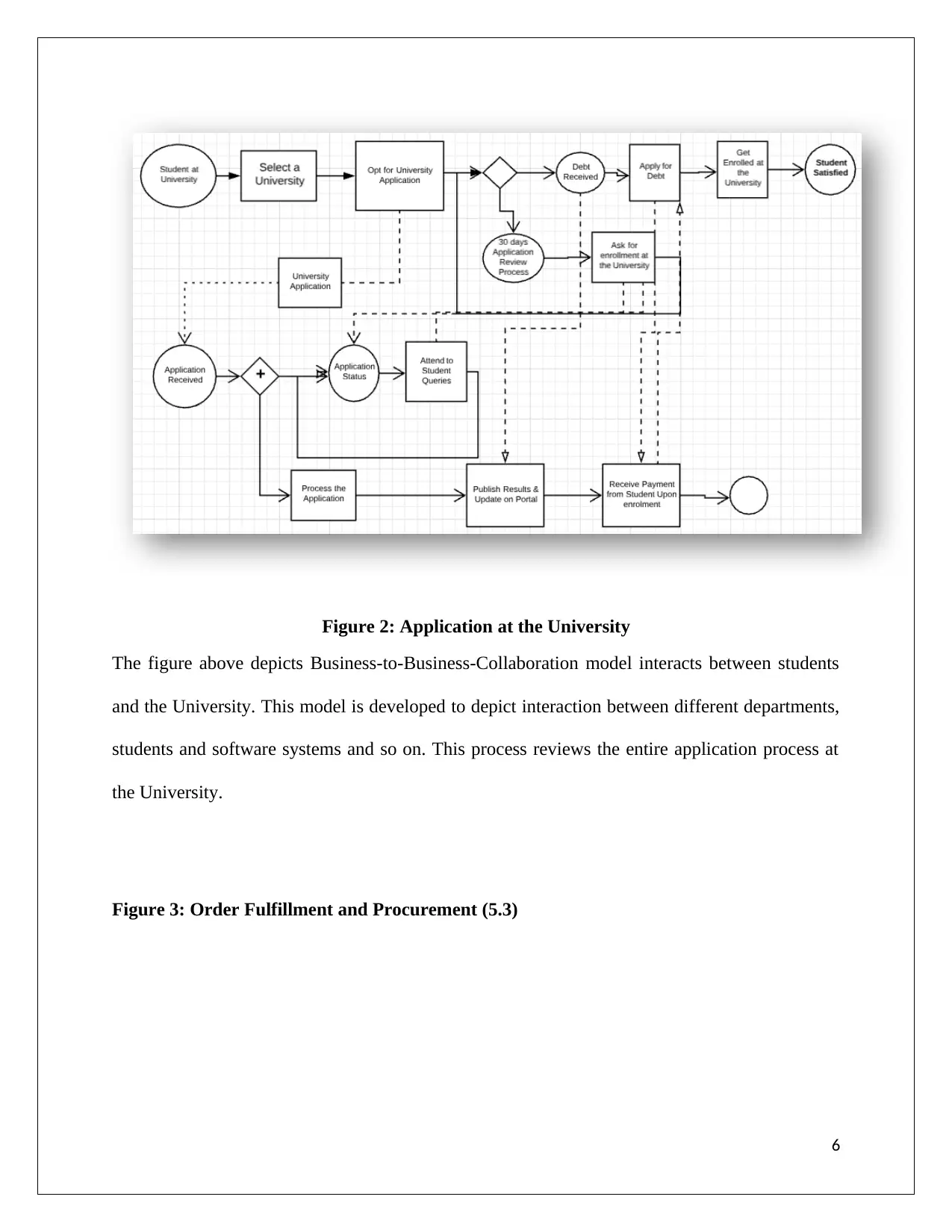
Figure 2: Application at the University
The figure above depicts Business-to-Business-Collaboration model interacts between students
and the University. This model is developed to depict interaction between different departments,
students and software systems and so on. This process reviews the entire application process at
the University.
Figure 3: Order Fulfillment and Procurement (5.3)
6
The figure above depicts Business-to-Business-Collaboration model interacts between students
and the University. This model is developed to depict interaction between different departments,
students and software systems and so on. This process reviews the entire application process at
the University.
Figure 3: Order Fulfillment and Procurement (5.3)
6
⊘ This is a preview!⊘
Do you want full access?
Subscribe today to unlock all pages.

Trusted by 1+ million students worldwide
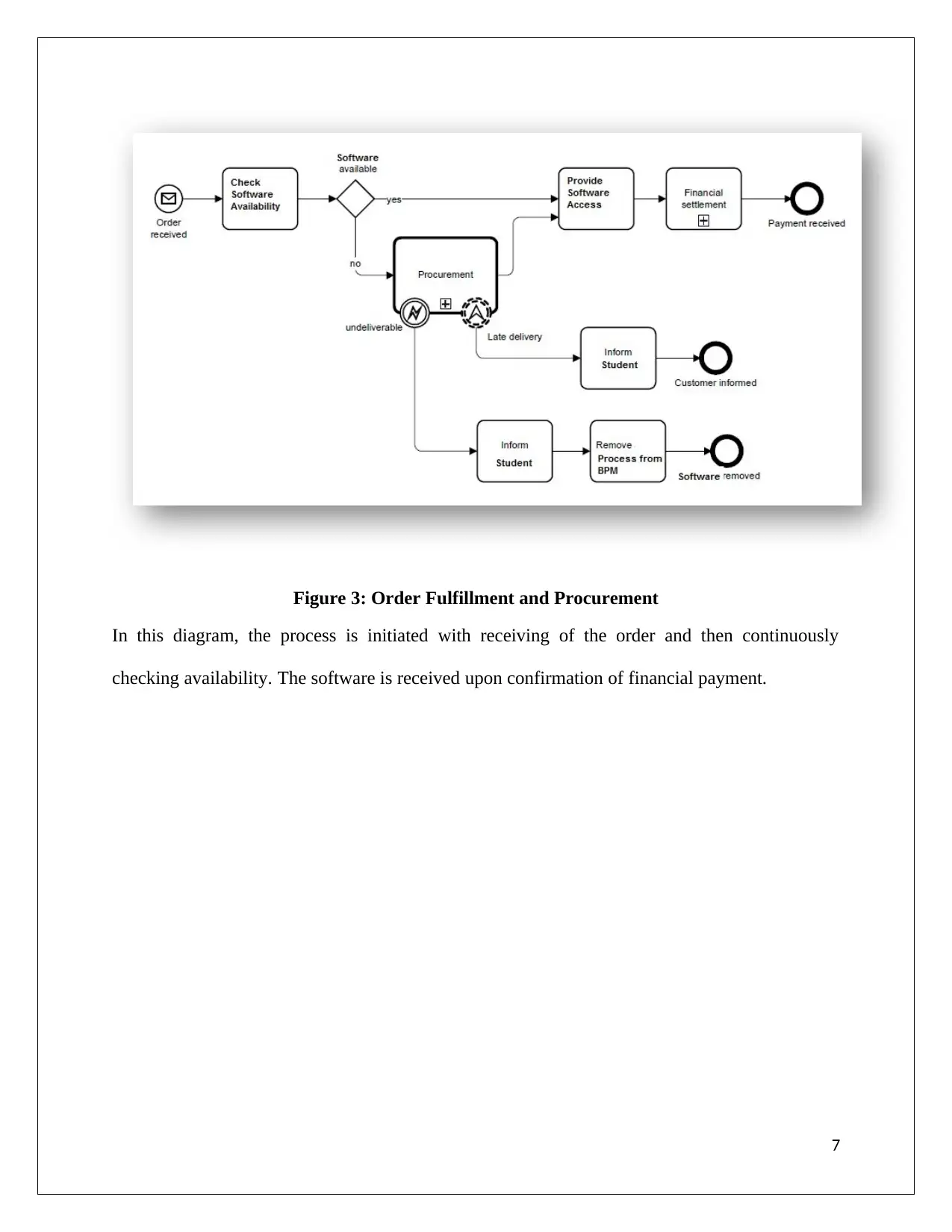
Figure 3: Order Fulfillment and Procurement
In this diagram, the process is initiated with receiving of the order and then continuously
checking availability. The software is received upon confirmation of financial payment.
7
In this diagram, the process is initiated with receiving of the order and then continuously
checking availability. The software is received upon confirmation of financial payment.
7
Paraphrase This Document
Need a fresh take? Get an instant paraphrase of this document with our AI Paraphraser
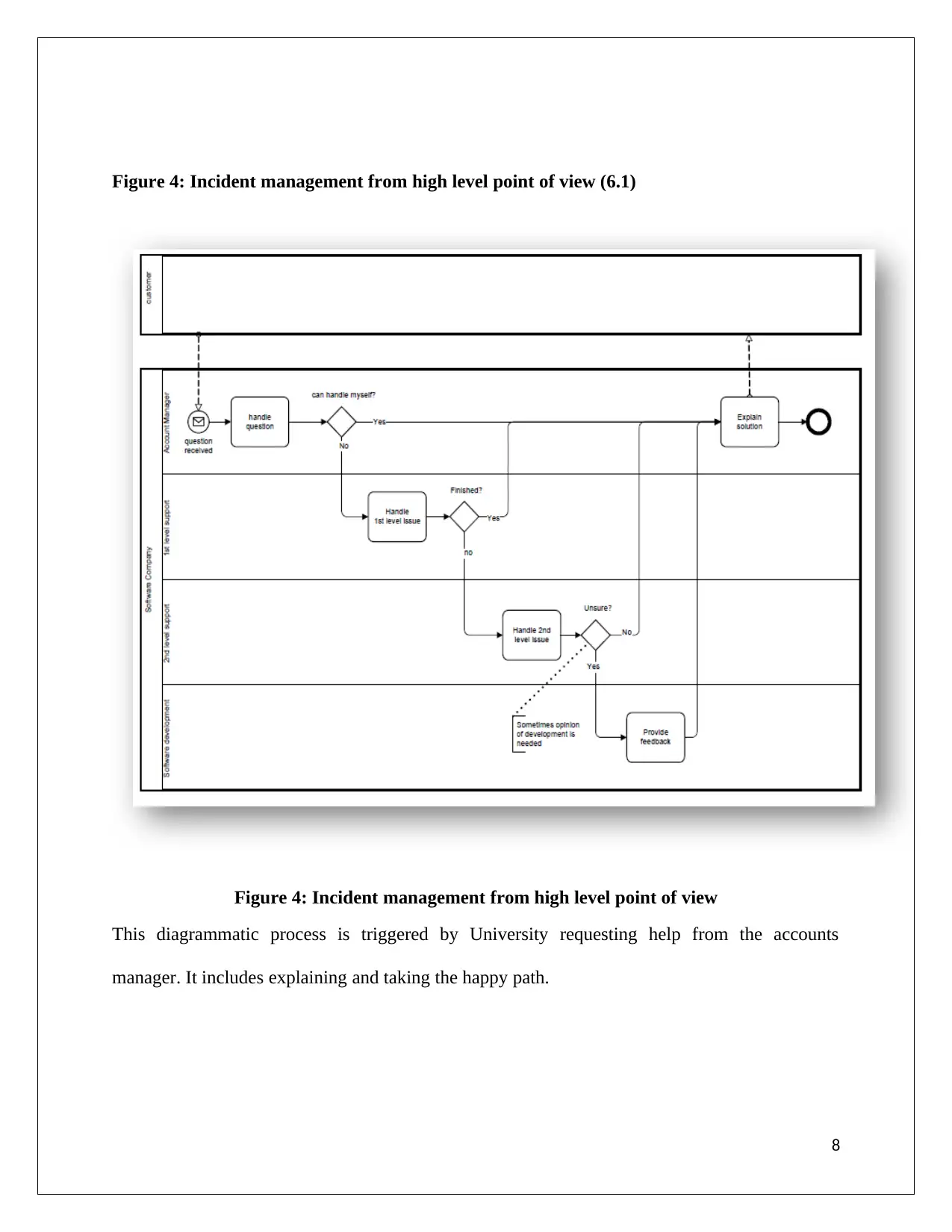
Figure 4: Incident management from high level point of view (6.1)
Figure 4: Incident management from high level point of view
This diagrammatic process is triggered by University requesting help from the accounts
manager. It includes explaining and taking the happy path.
8
Figure 4: Incident management from high level point of view
This diagrammatic process is triggered by University requesting help from the accounts
manager. It includes explaining and taking the happy path.
8
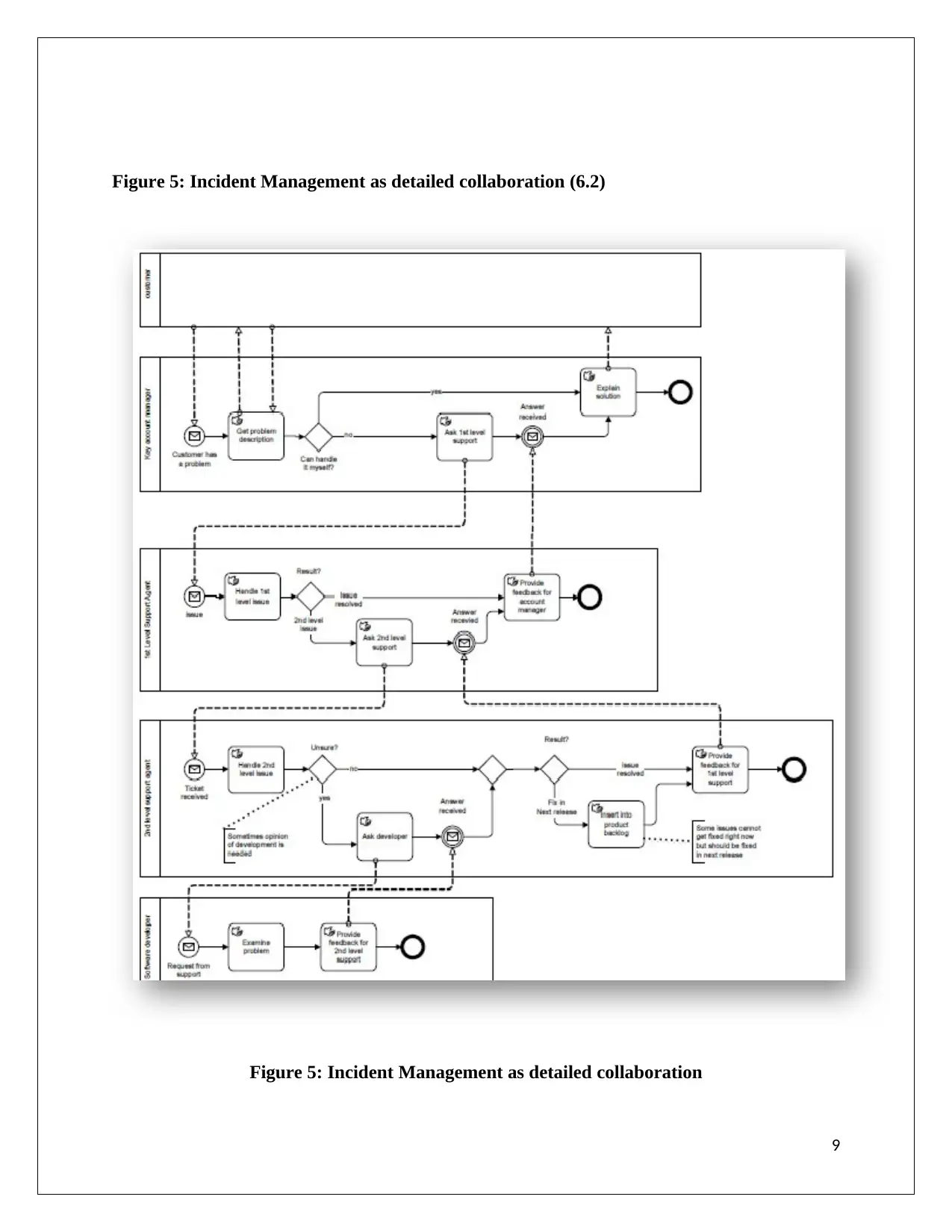
Figure 5: Incident Management as detailed collaboration (6.2)
Figure 5: Incident Management as detailed collaboration
9
Figure 5: Incident Management as detailed collaboration
9
⊘ This is a preview!⊘
Do you want full access?
Subscribe today to unlock all pages.

Trusted by 1+ million students worldwide
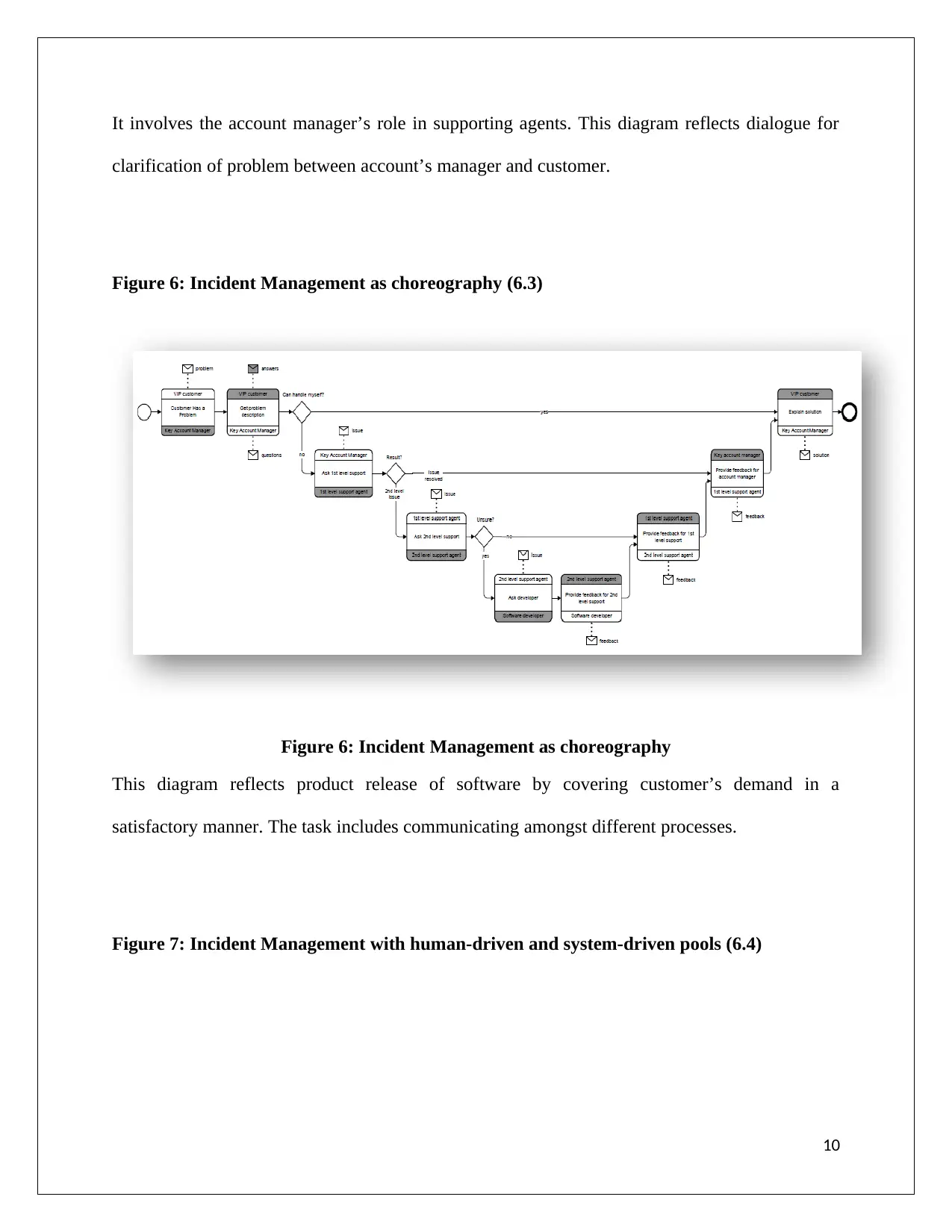
It involves the account manager’s role in supporting agents. This diagram reflects dialogue for
clarification of problem between account’s manager and customer.
Figure 6: Incident Management as choreography (6.3)
Figure 6: Incident Management as choreography
This diagram reflects product release of software by covering customer’s demand in a
satisfactory manner. The task includes communicating amongst different processes.
Figure 7: Incident Management with human-driven and system-driven pools (6.4)
10
clarification of problem between account’s manager and customer.
Figure 6: Incident Management as choreography (6.3)
Figure 6: Incident Management as choreography
This diagram reflects product release of software by covering customer’s demand in a
satisfactory manner. The task includes communicating amongst different processes.
Figure 7: Incident Management with human-driven and system-driven pools (6.4)
10
Paraphrase This Document
Need a fresh take? Get an instant paraphrase of this document with our AI Paraphraser
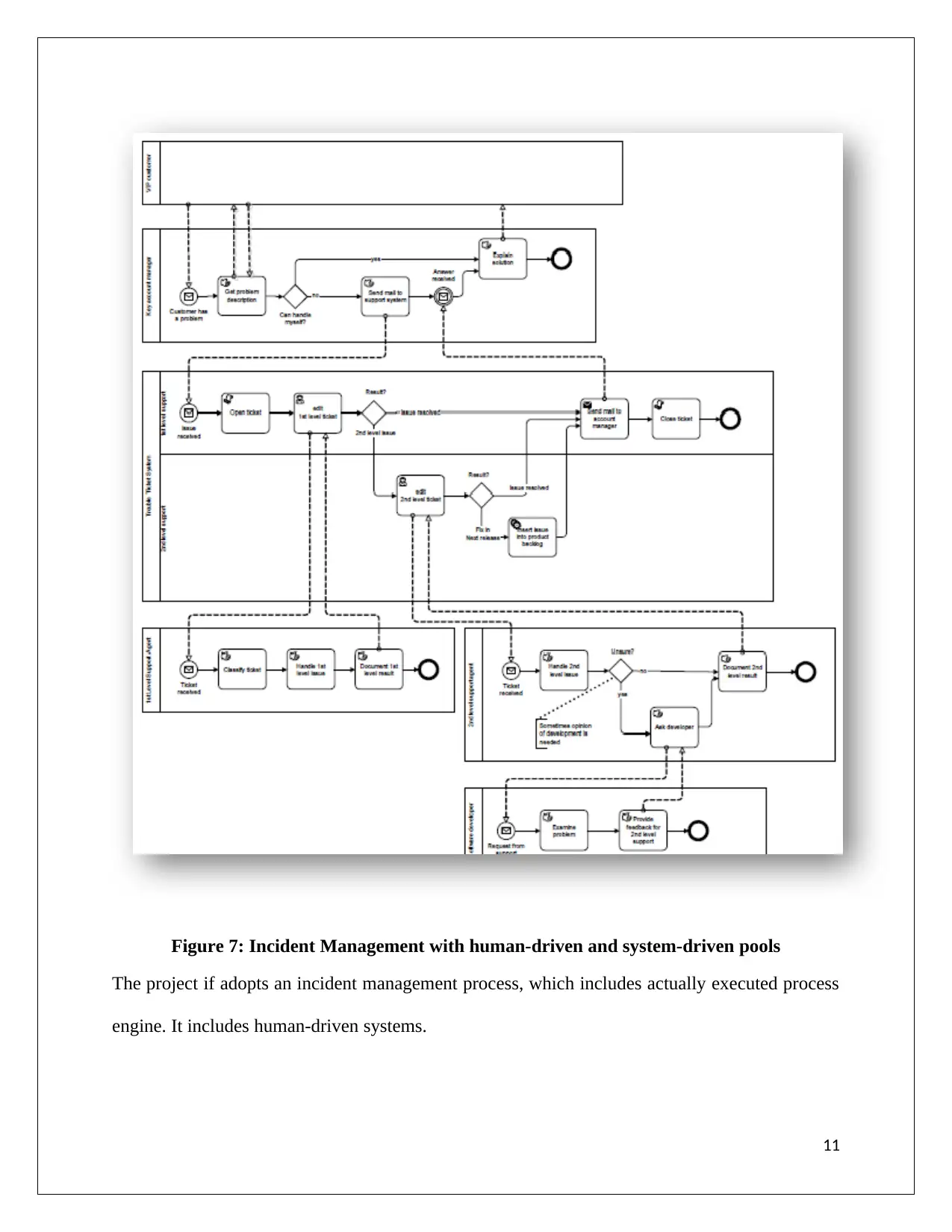
Figure 7: Incident Management with human-driven and system-driven pools
The project if adopts an incident management process, which includes actually executed process
engine. It includes human-driven systems.
11
The project if adopts an incident management process, which includes actually executed process
engine. It includes human-driven systems.
11
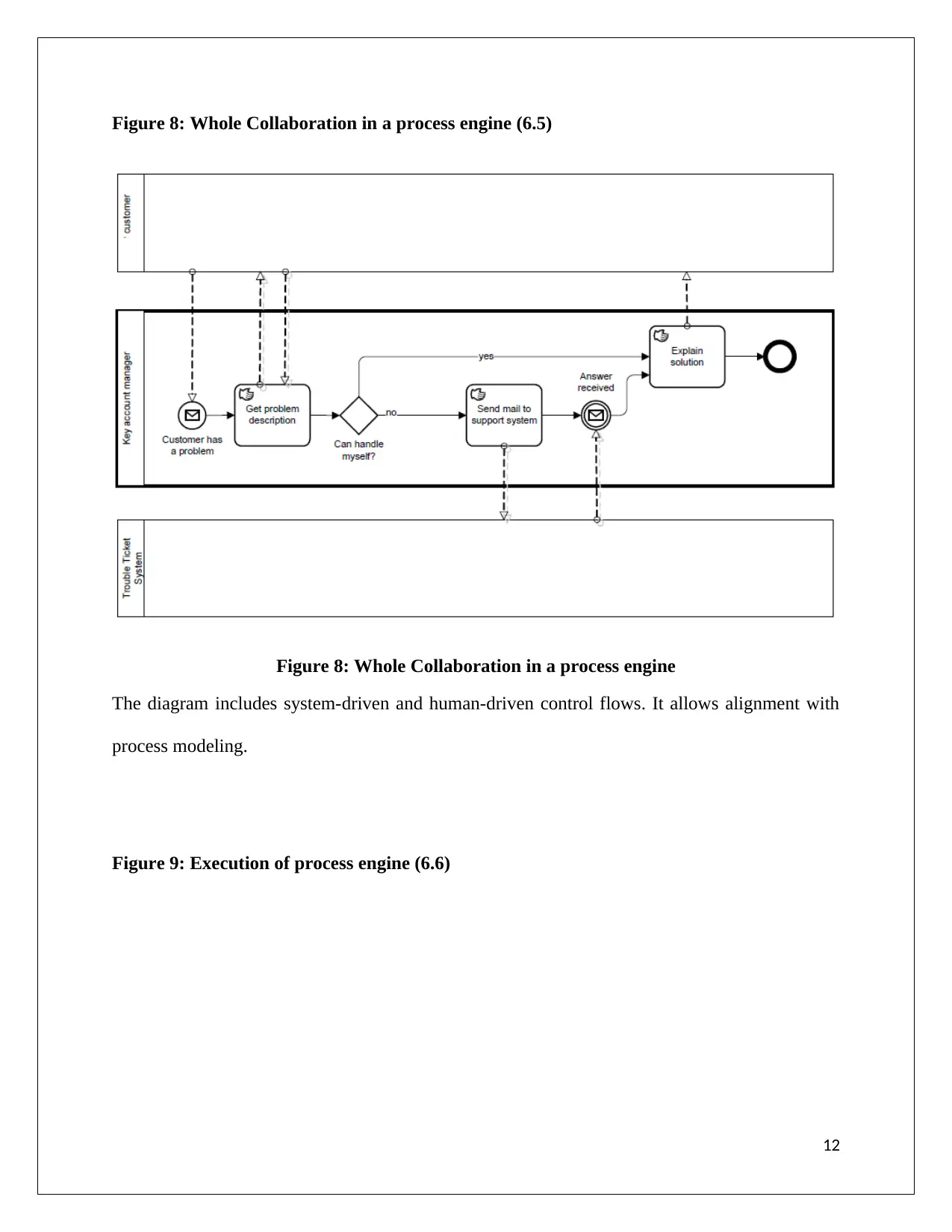
Figure 8: Whole Collaboration in a process engine (6.5)
Figure 8: Whole Collaboration in a process engine
The diagram includes system-driven and human-driven control flows. It allows alignment with
process modeling.
Figure 9: Execution of process engine (6.6)
12
Figure 8: Whole Collaboration in a process engine
The diagram includes system-driven and human-driven control flows. It allows alignment with
process modeling.
Figure 9: Execution of process engine (6.6)
12
⊘ This is a preview!⊘
Do you want full access?
Subscribe today to unlock all pages.

Trusted by 1+ million students worldwide
1 out of 21
Related Documents
Your All-in-One AI-Powered Toolkit for Academic Success.
+13062052269
info@desklib.com
Available 24*7 on WhatsApp / Email
![[object Object]](/_next/static/media/star-bottom.7253800d.svg)
Unlock your academic potential
Copyright © 2020–2025 A2Z Services. All Rights Reserved. Developed and managed by ZUCOL.




